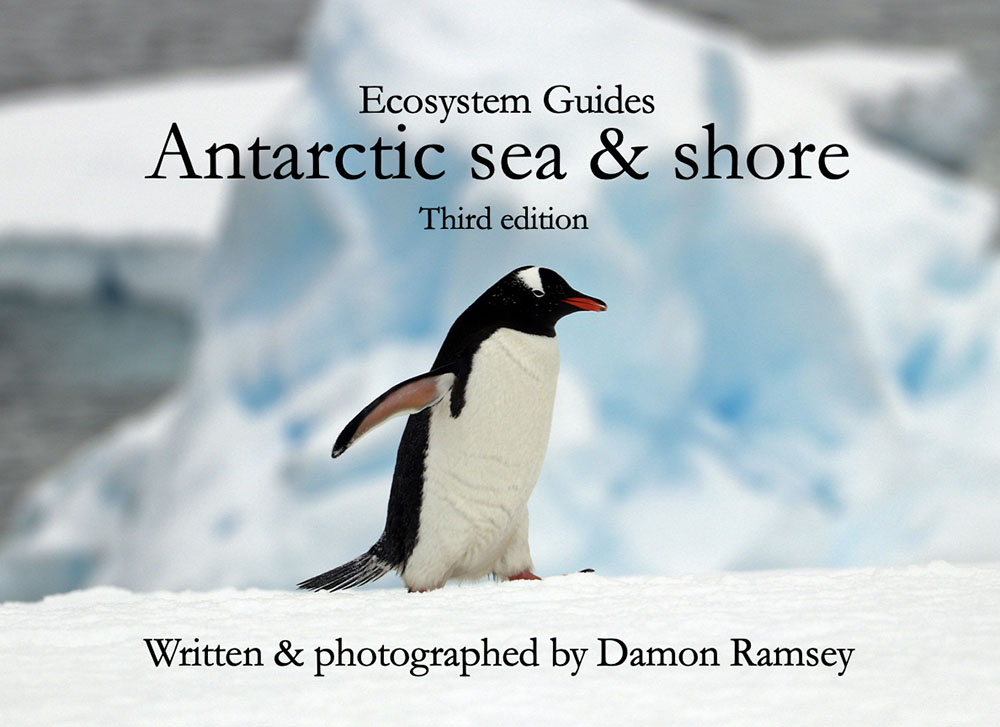ecosystem-guides.com
....exploring the planet's ecosystems
St. Kilda
Scotland
personal experience
I visited these islands in 2013 as a naturalist on board Serenissma with Noble Caledonia.
general geography
The St. Kilda islands are the westernmost islands of the Outer Hebrides of Scotland. They are set of islands about 100 miles off the mainland. The largest island is Hirta, which includes the settlement at Village Bay. The piece of land protecting the bay was once part of the main island by a bridge, but is now a separate island called Dun (which means fort).
landforms
They islands are physically very impressive, the high cliffs often shrouded in mist. The rocks are igneous (mainly granites and gabbro), the result of a long-extinct ring volcano rising from a seabed plateau approximately 40 metres below sea level during the Tertiary. The north side of the main island Hirta has the highest sea cliffs in the UK, at up to 427 metres.
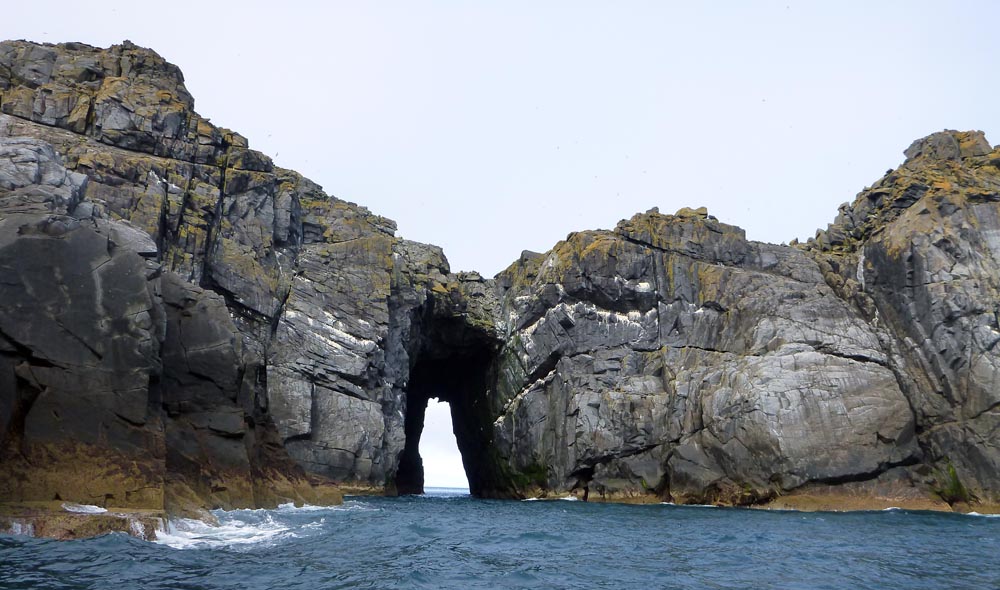
Not far off the main island are the ‘stacs’, a series of very tall isolated sea stacks, where the Northern Gannets breed right at the very top. The two main sea stacks reach 196 and 172 metres, making them the highest in Britain.
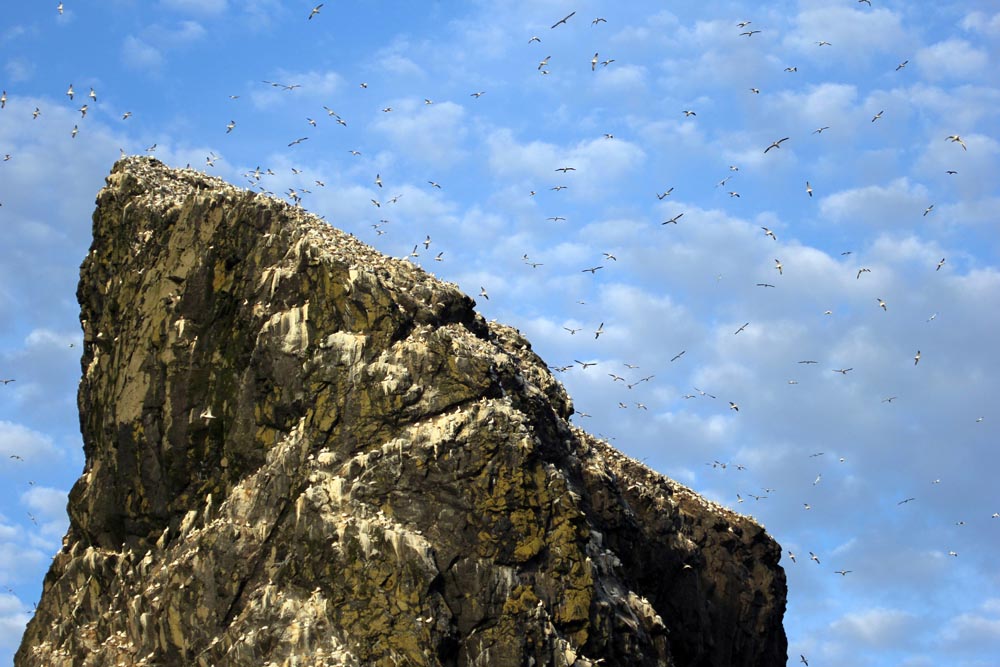 Northern Gannets in swarms at the top of the stacs
Northern Gannets in swarms at the top of the stacshistory
These remote islands have a long and interesting history, especially in the light of their isolation. St Kilda may have been permanently inhabited for at least two thousand years, although the population probably never exceeded a few hundred. The evidence includes architectural features from prehistoric times, although the earliest written records of island life date from the late middle ages. The medieval village on Hirta was rebuilt in the 19th century. However, the island was evacuated by 1930, from influences such as religious zeal, illnesses brought by increased external contacts through tourism, and the First World War. Today the only year-round residents are defence personnel, conservation workers, volunteers and scientists. The islands became one of Scotland's five World heritage sites in 1986, and it is one of the few in the world to hold joint status for its natural and cultural qualities.
wildlife
This is a great place for seabirds, as there are big numbers of many iconic North Atlantic species breeding here. Fulmar Petrels nest in the rocks on the main slope at the village landing area. Dùn is home to the largest colony of Fulmars in Britain with about 67,000 pairs in the island group. This is about 13 percent of the UK total. Up until last century, St Kilda was their only UK breeding ground, but they have since spread and established colonies elsewhere.
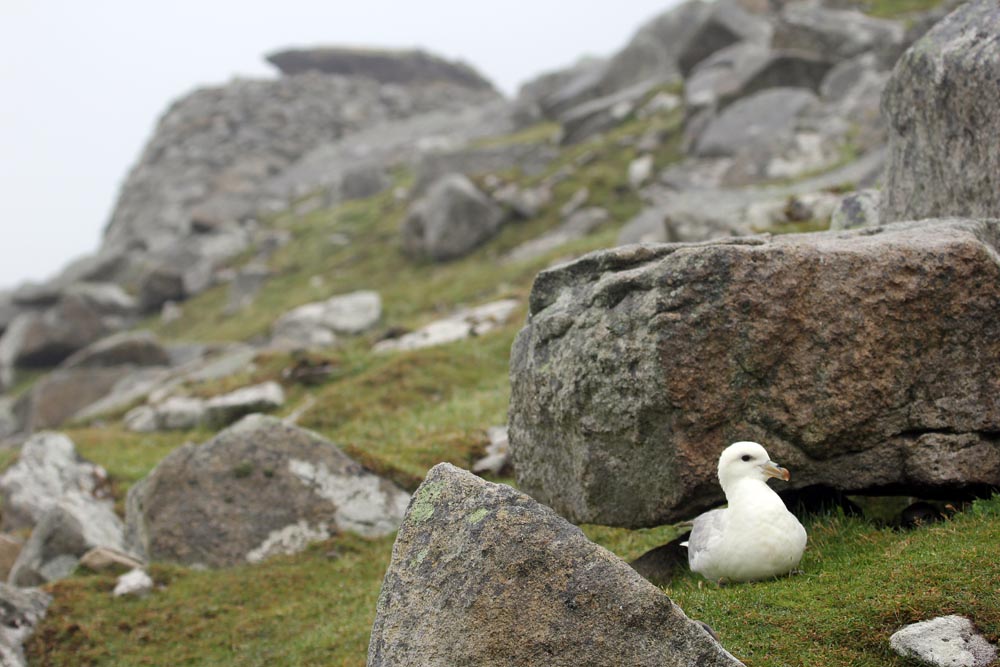 the snot sneezing Fulmar Petrels (Damon Ramsey)
the snot sneezing Fulmar Petrels (Damon Ramsey)Across the bay there are European Common Shags on the lower rocks, Kittiwake Gulls and Common Guillemots perched on the steep middle sections.
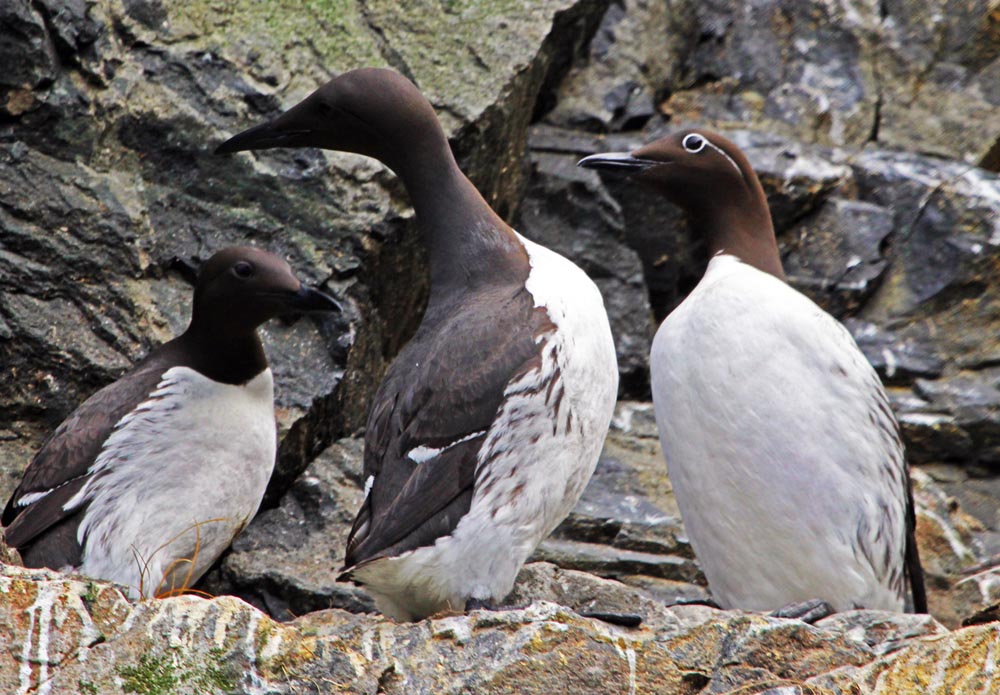 what do you get when you cross a penguin with a cormorant? a Guillemot!
what do you get when you cross a penguin with a cormorant? a Guillemot!The Atlantic Puffins nest in the flower beds at the very top. And at the end of the day, the Puffins are circling in the thousands, like a swarm of large bees. There are 136,000 pairs of Atlantic Puffins, about 30 percent of the UK total breeding population.
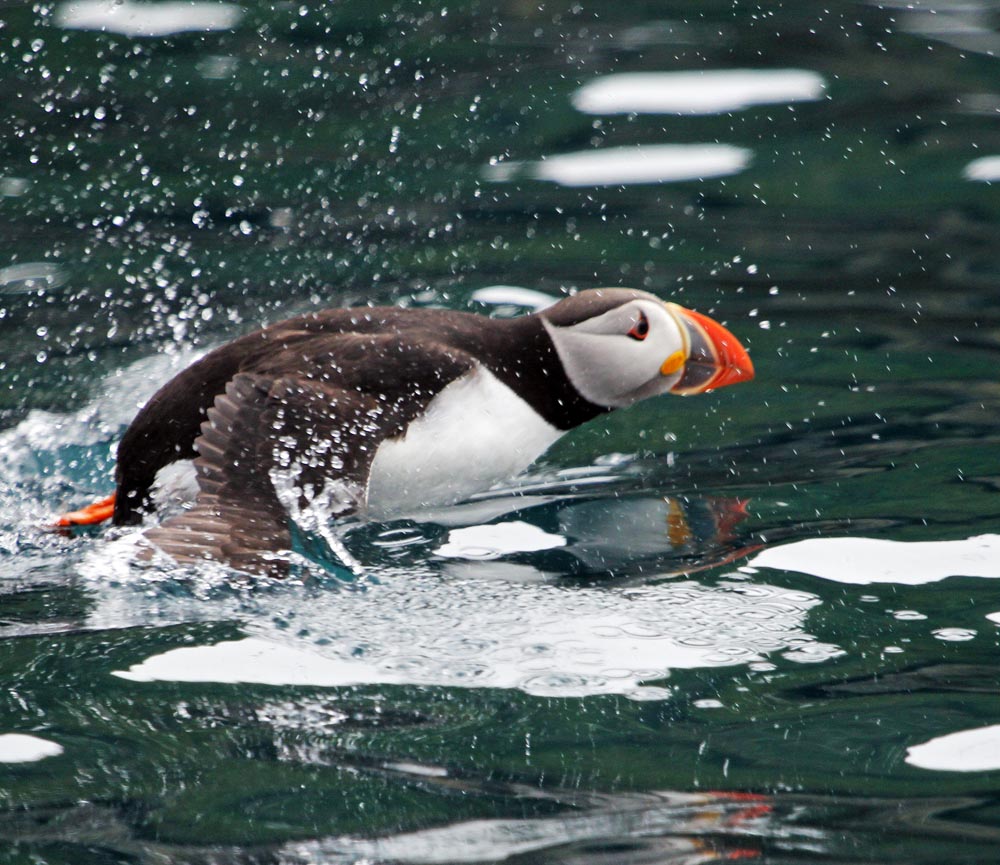 Puffin taking off!
Puffin taking off!There are also Razorbills and Black Gullimots to be found floating in the waters around here. There are thousands of Atlantic Gannets breeding on the stacks. These spectacular steep sided stacks with gannets perched on top, is one of the world's largest colony of Northen Gannets. It totals 30,000 pairs, about a quarter of the global population. The last Great Auk seen in Britain was killed on one of the St.Kilda sea stacks.
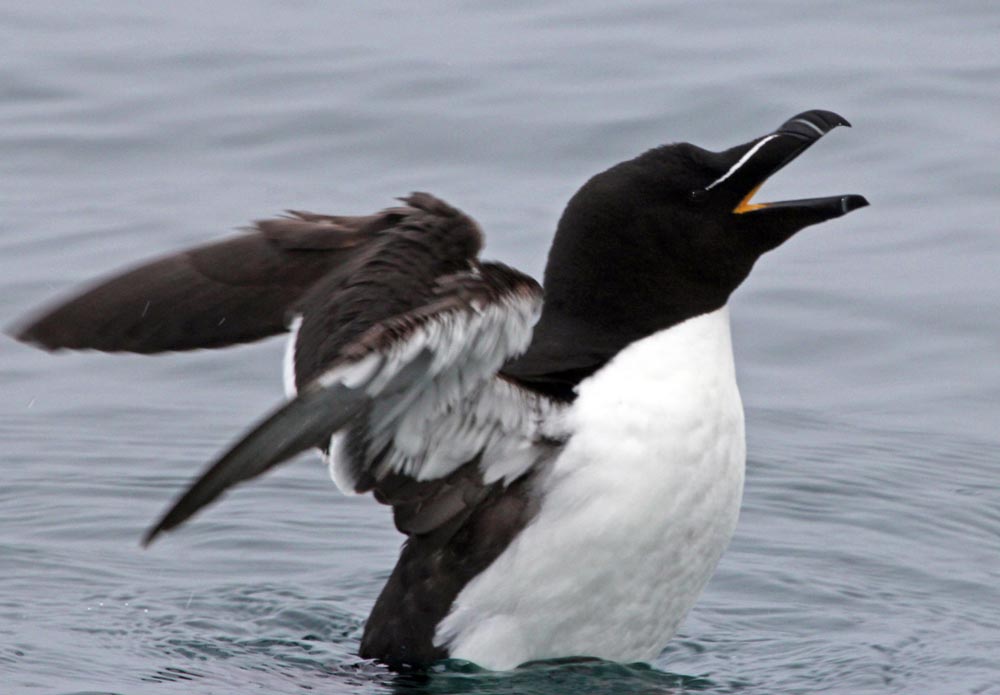 Razorbill
Razorbillaccess
This island group is difficult to access. The island is subject to swell anytime of the year, and therefore it is often not possible to land for days at a time.
Day trips are available from Harris and Lewis, but would take three hours each way on small boats. There are also longer multi-day cruises from these areas. You can also volunteer for conservation work (doing maintenance) on the islands for several weeks with the National Trust for Scotland.
I visited the island on board Serenissma as part of the expedition company Noble Caledonia.
